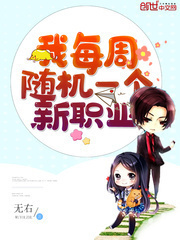Chapter 2352: 【2352】close
Chapter 2352 [2352] Get close
There is no elephant head at this stage. There is not a single pediatric hospital in the capital.
Most people don't think that children can have "cause" (homonym "**** inflammation. In fact, some children have "cause" inflammation in their infancy. Children have "cause" inflammation. Where to look, of course, the most professional It's to see a gynecologist.
How can a child who does not have a "surname" (homonym for "sex") get "due to" Daoyan? "Because" Daoyan has nothing to do with "surname" life. Women who haven't lived a "surname" life will have more "due to" Taoism. Does "Yin" Daoyan have anything to do with the maturity of "surname", and does it have anything to do with menstruation? There may be a relationship, but the above two are definitely not the pathogenic factors of "due to" inflammation. "Due to" the biggest cause of inflammation is infection. How to get infected, unclean, poor self-immunity and so on are the main pathogenic factors.
Infants and young children have low immunity, and it is more common to get "due to" inflammation. Following Mr. Du, she had seen parents who had brought their children to ask a gynecologist to treat stubborn children with "due to" inflammation.
"Due to" Daoyan, this disease is not easy to cure, not only doctors but also patients know. Because many people use various antibiotics to treat this disease in clinic, it is almost turning this disease into a drug-resistant disease. There are many patients with repeated attacks. We can only start from our own cleanliness, and we can't just rely on drug treatment to enhance our physique and immunity. The child's words should be treated symptomatically while waiting for her immune system to gradually develop and become stronger. During the period, the drug has to be used, and a fungal culture susceptibility test should be done to identify antibiotics rather than overuse antibiotics. For the rest, parents focus on cleaning and enhancing physical fitness to remove the incentives for the disease as the first element.
You will find it strange that this is not a urinary tract infection. You are talking about "caused" tract inflammation? Urinary tract infections in women are especially recurring for a long time, and the relationship between the next and "cause" tract inflammation should be excluded. Because of these two places, the urethral orifice and the "cause" orifice are anatomically close together. You just want to cure one of them, and then you get infected by your neighbors.
If you only think about urinary tract infection, will you think of cleaning the external "cause"? Will not.
Here is another place, the anus. The **** is a bit off from these two places, but not too far. In some clinical cases, parents did not pay attention to the hygiene of their children or taught them personal hygiene. They wiped the toilet paper and wiped the **** germs into the "cause" tract and the urethra.
Doctor Tian turned to look at the child again. The child's hands really grabbed the lower body from time to time, grabbing the whole piece, even the "cause".
Wei snickered and asked the two internal medicine students: "Did you not notice before Yingying didn't come? Have you ever studied gynecology?"
Zhao Zhaowei and Zhang Desheng rolled their eyes. Wei: What did you say, did you find the problem like Yingying?
It is estimated that this may be an advantage of female doctors. Female doctors can quickly think of gynecological diseases, while male doctors are slow to respond to it.
Is that right? Why did Dr. Tian, like a female doctor, not notice it?
You medical students don't need to make excuses for yourself like this. Wei said that he first admitted that he was not as good as Xie's brain.
My own hospital does not have a pediatric gynecology department. Dr. Tian's head is big. What to say to the parents, let the parents take their children to other tertiary general hospitals to see the gynecology department. If it is "due to" a refractory infection, you must find a specialist to see how to combine medication.
(end of this chapter)
There is no elephant head at this stage. There is not a single pediatric hospital in the capital.
Most people don't think that children can have "cause" (homonym "**** inflammation. In fact, some children have "cause" inflammation in their infancy. Children have "cause" inflammation. Where to look, of course, the most professional It's to see a gynecologist.
How can a child who does not have a "surname" (homonym for "sex") get "due to" Daoyan? "Because" Daoyan has nothing to do with "surname" life. Women who haven't lived a "surname" life will have more "due to" Taoism. Does "Yin" Daoyan have anything to do with the maturity of "surname", and does it have anything to do with menstruation? There may be a relationship, but the above two are definitely not the pathogenic factors of "due to" inflammation. "Due to" the biggest cause of inflammation is infection. How to get infected, unclean, poor self-immunity and so on are the main pathogenic factors.
Infants and young children have low immunity, and it is more common to get "due to" inflammation. Following Mr. Du, she had seen parents who had brought their children to ask a gynecologist to treat stubborn children with "due to" inflammation.
"Due to" Daoyan, this disease is not easy to cure, not only doctors but also patients know. Because many people use various antibiotics to treat this disease in clinic, it is almost turning this disease into a drug-resistant disease. There are many patients with repeated attacks. We can only start from our own cleanliness, and we can't just rely on drug treatment to enhance our physique and immunity. The child's words should be treated symptomatically while waiting for her immune system to gradually develop and become stronger. During the period, the drug has to be used, and a fungal culture susceptibility test should be done to identify antibiotics rather than overuse antibiotics. For the rest, parents focus on cleaning and enhancing physical fitness to remove the incentives for the disease as the first element.
You will find it strange that this is not a urinary tract infection. You are talking about "caused" tract inflammation? Urinary tract infections in women are especially recurring for a long time, and the relationship between the next and "cause" tract inflammation should be excluded. Because of these two places, the urethral orifice and the "cause" orifice are anatomically close together. You just want to cure one of them, and then you get infected by your neighbors.
If you only think about urinary tract infection, will you think of cleaning the external "cause"? Will not.
Here is another place, the anus. The **** is a bit off from these two places, but not too far. In some clinical cases, parents did not pay attention to the hygiene of their children or taught them personal hygiene. They wiped the toilet paper and wiped the **** germs into the "cause" tract and the urethra.
Doctor Tian turned to look at the child again. The child's hands really grabbed the lower body from time to time, grabbing the whole piece, even the "cause".
Wei snickered and asked the two internal medicine students: "Did you not notice before Yingying didn't come? Have you ever studied gynecology?"
Zhao Zhaowei and Zhang Desheng rolled their eyes. Wei: What did you say, did you find the problem like Yingying?
It is estimated that this may be an advantage of female doctors. Female doctors can quickly think of gynecological diseases, while male doctors are slow to respond to it.
Is that right? Why did Dr. Tian, like a female doctor, not notice it?
You medical students don't need to make excuses for yourself like this. Wei said that he first admitted that he was not as good as Xie's brain.
My own hospital does not have a pediatric gynecology department. Dr. Tian's head is big. What to say to the parents, let the parents take their children to other tertiary general hospitals to see the gynecology department. If it is "due to" a refractory infection, you must find a specialist to see how to combine medication.
(end of this chapter)







